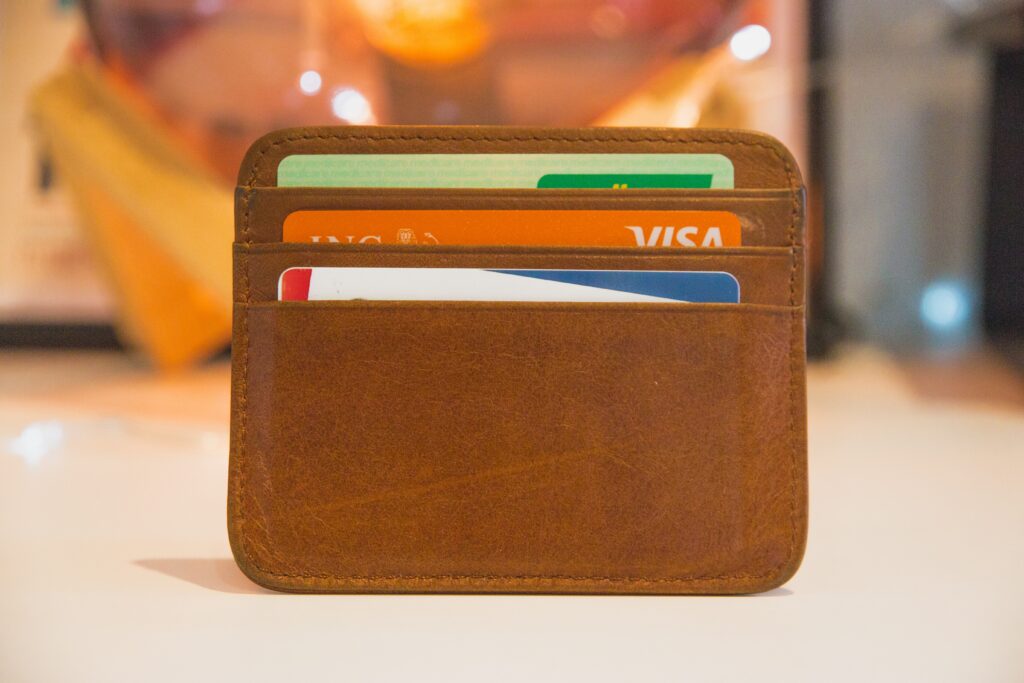Financial health and wellness remains one of the most crucial topics today. At a time of sheer economic turmoil, it’s critical to have enough to survive the next curveball this economy throws at us, and having strong financial planning and savings can do just that.
According to the Financial Health Network, the financially healthy section of the population hit an all-time low of 31% in 2022—a 10% decline versus 2021. It was the first recorded decrease in five years using pulse surveys. On the other end of the spectrum, financially ailing adults (Faas) hovered around 16%. While that may not seem too bad, the remaining 55% are in the “Financially Coping” category—many of whom are probably on the brink of becoming Faas. The bottom line is that less than a third of the US population is indisputably “financially healthy.”
So, what exactly determines sound financial health? In a nutshell, it’s one’s ability to cope competently with inflation, maintain spending patterns below income levels, and use credit facilities without building massive debt piles. Conversely, defective financial well-being is the diametric opposite, where individuals have lost control of their credit card transactions, are eating into their savings, and have no nest egg to speak of.
Undoubtedly, challenges hit people from all sides in the last three years, starting with COVID-19. From there, things got volatile, as Americans coped with new virus strains, social distancing, a shift to remote working, the Great Resignation, supply chain dysfunction, gas prices going through the roof, and currently, the threat of an oncoming recession. However, these are now all facts of life, and there’s no excuse for not trying to get one’s finances on track. Indeed, it’s pretty essential, when one considers that money worries are the root cause of unmanageable stress. If allowed to take a grip on our lifestyles, the latter can result in substance abuse, temper tantrums, depression, work lapses, family upheaval, and other unwanted side effects. Thus, this article aims to give Faas and those on the edge a constructive approach to rectifying matters.
You may think you’re too far gone for advice to help you climb on the Financial Health bandwagon. Well, that’s not true, because the principles apply to anyone in a boat counteracting the rapids of failing financial health. If you’d like the assistance of a step-by-step plan, read on…
1. Examine your connection to money
According to Rachel Cruze, a lot of the disruption to sound budgeting can be traced back to the spending habits you learned growing up. So, the question is: Did your parents manage their money wisely, or were they living on the edge and continuously trying to evade debt collectors? Unfortunately (or fortunately), childhood monetary experiences play into how you behave today—consciously or subconsciously. Consequently, a big move in the right direction is becoming self-aware. In other words, think back to your upbringing and see if the old days are coming back to haunt you. Then, write them down and face the facts. Once they’re on the table and under scrutiny, past negative influences lose their power because awareness triggers reactions to expel the urges from recurring. It means asking yourself questions such as:
- Do I want to be the same as my parents or not?
People react differently to childhood experiences: some with reckless parents live frugally, trying to be the diametric opposite. Others allow recklessness to lead the way for current behavior. If the latter is you, stop the negative trend in its tracks, like a smoker would “cold turkey” kick that health hazard to the curb. - What mistakes have I made that I would do differently with twenty-twenty hindsight?
It may be painful to admit errors. Still, remember, we all slip off the straight and narrow at some time or other. That’s not failing. Indeed, failing would be not recognizing the drivers and doing something about expelling them from the picture.
2. Get down to drawing up a budget
Money doesn’t have a life of its own. For money to be useful to you, you must tell it where to go and when. That’s precisely what a budget does for you. It creates a plan for deploying your income or capital gains by channeling funds into:
- Basic survival needs: Food and drink, shelter, utilities (gas, water, power), healthcare, transport, clothing, etc.
- Security requirements: Community choice, life insurance, other insurances, home alarm services, saving for emergencies.
- Child responsibilities: Education, babysitters, pediatric care, diets, and minimum stimulation through toys, books, and games.
- Socializing with friends and family: Celebrations, holidays, hosting guests, doling out gifts, eating out, participating in various events.
- Entertainment: Vacations, cable or streaming, leisure, sports, and hobbies.
- Luxuries: Reviewing all the above but uplifting them to extraordinary levels (and sometimes eye-popping prices). As examples:
- Buying a car could elevate bussing for transportation (under survival needs). The latter, in turn, can transition to a choice ranging from a used Toyota to a new Porsche.
- Clothing can come from a thrift store or Costco bargain counter, or iconic (and pricey) brand stores like Nike, Under Armor, Zimmerman, or Versace.
- Vacation choices can take anything into account, from caravan parks to motels to five-star resorts.
Clearly, there are several ways this can go. Of course, in the list above, (4) to (6) is where expenditures often escalate dramatically. Your budget can also go off kilter under (3), depending on where your imagination takes you. However, the big thing with a budget is to stay grounded, attaching a realistic cost estimate to each, and flag them as:
- Essential must-haves, no discussion.
- Optional “nice-to-haves,” up for debate.
At the exercise’s end, sum up the expenditures and compare the total to your disposable income. If it doesn’t work the first time, go back to what you have and cut it down. It may take a few emotionally painful manipulations before you get cash outflow to match inflow. There are excellent budgeting tools available to get it just right. Keep in mind the least flexible aspects are (1) to (3) above, and the most expendable are (4) to (6). Oh, and another thing—refer to your analysis in (A) above to ensure that the old bad habits aren’t disrupting your thinking as you compile the numbers.
3. Take on the hard yards with determination
With a well-structured budget in place and your education gaps on the table, you must enter the real world and start spending less than you earn. In other words, this step involves making the budget work. A constructive approach is to view it as a journey, traveling from one touchpoint to the next, ensuring that you match the metrics. The most significant threat to your success is you tripping over yourself, and credit abuse is the most potent driver behind that eventuality.
Indeed, we live in a society where everything we buy these days depends on a tiny oblong card paving the way. Credit cards are used prolifically online, at ATMs, paying restaurant bills, buying gifts, booking air tickets, and reserving hotels. In fact, many of us even pay our utilities and rent with them.
However, the problem is that you don’t get a real sense of the piles of money changing hands in each transaction. If you had to count the notes, you probably would, but you don’t because CCs cut out that cumbersome process. Indeed, CC purchases, whether for $20 or $2,000, hardly budge people’s emotional needle as the payment terminal shows “Approved.” However, it surely catches our attention when the CC account arrives at our door at the end of the month, reflecting multiple debits and a sizable red total. It’s also when the needle spins into the stress zone for the first time, but by then, it’s too late.
Here are some startling facts about credit card debt in 2022:
- Americans owed the credit card companies $926 million—ready to cross the billion-dollar threshold soon.
- More than 50% of card users allowed CC debt balances to fund their lifestyle.
- Across all credit cards, the average APR (annual percentage rate) was a whopping 16.27%.
- Card users have around five CCs in their wallets and purses at any time.
The bottom line is that CC leverage can play havoc, even with the best-laid plans. That is, unless you know how devastatingly it can impact your goals to stay wealth-healthy. Moreover, APRs can jump as high as 29% for missteps such as late payments, with little chance of reversing such dilemmas. In addition, a significant influence on overspending is the ability to spread consumption over many CCs. As a result, each account balance may not look manageable, but add them up, and the total may be distressing.
How can you get out of debt?
Suppose you’ve entered the financial health project behind the credit card debt blackball, only managing monthly minimum payments, and the inescapable interest burden is collapsing any chance of budgetary success. Throw student loans into the same circle. But are mind-boggling debt-servicing costs indeed “inescapable?”
- Be aware that the debt relief marketplace offers you a broad pool of resources to resolve unsecured loans, which is what CC leverage is all about.
- Consequently, contacting a reputable licensed entity in the above arena is a giant step forward in consolidating all the CCs into one loan with principal paydown at a reasonable interest rate and, sometimes, zero interest.
- However, it’s not an initiative you can or should try to do alone. It takes professional expertise to negotiate a pay-down program with AMEX, Visa, and others, thus ending the nightmare of debt collectors hounding you and those ballooning CC balances coming at you month after month.
- Taking such a step is the opposite of sticking your head in the sand, hoping the problems will disappear. They won’t unless you harness expertise to give you the chance of a fresh start.
Buy now, pay later (BNPL) is viable if you apply discipline.
BNPL is a credit usage option that’s taking the market by storm. It’s a massive subject in its own right, but in a nutshell, it rests on the premise of short-term loans (i.e., an average of three months) with installments paying off the debt entirely at the end of the term with zero interest in the mix. Thousands of merchants offer it through providers like PayPal and Affirm. So, short debt spurts deploying BNPL is a proper budgetary tool if you don’t allow them to get out of hand. But please note—the instant late payments appear in the BNPL leveraging arena, high APRs enter the formula, and you’re back to where you started with CCs.
Start walking towards financial health
Changing your financial health depends on a disciplined approach that attacks the primary obstacles in your journey towards less stress and more freedom to live well on your terms. The strategy outlined above focuses on spending less than your income, thus allowing you to save funds for the future. Warren Buffet, the billionaire investment guru, has said that it’s only when the tide goes out that we can see those swimming without shorts. Recessions, COVID-19, and reaching retirement age are “tide-receding” events. That’s when your financial stability counts to help you into the future. So don’t be one of those unfortunate individuals caught swimming in your birthday suit!
If you’re a financial institution looking to help your customers invest better and become financially healthy, start off with understanding where they’re at. You can do that by having them complete a quick survey. SogoCX is an online survey and CX platform that helps you truly connect with your customers, identify response patterns, spot trends, and more! With powerful analytics leading the way, you’ll be able to develop a deep understanding of your customer and truly deliver on their needs.








